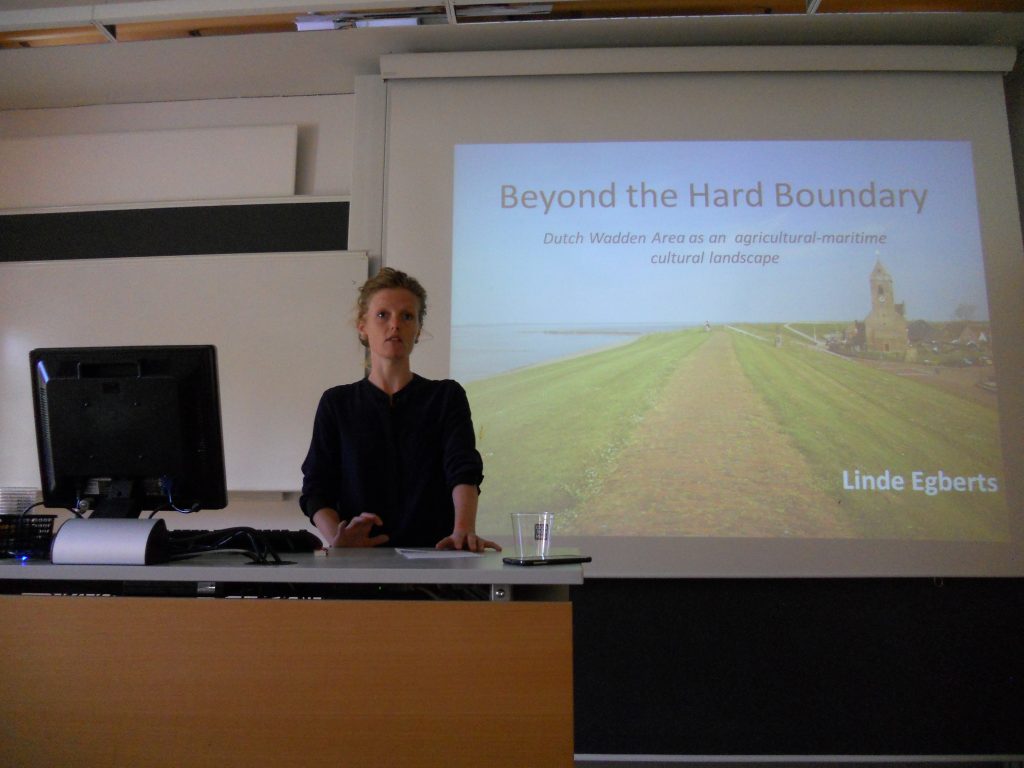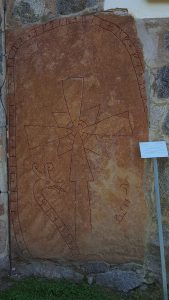by Linde Egberts, postdoctoral researcher and coordinator Heritage Studies
The Wadden Area is protected as a World Heritage Site by UNESCO , mainly because of its outstanding natural values. Its unique cultural landscape is often overlooked in the way the area is managed and planned. Yet, making a division between natural and cultural values is not so productive when thinking about historical landscapes.
This is a short summary of the paper I presented at the Landscape Archaeology Conference 2016 ( LAC2016) in Uppsala, Sweden, this August. Contributing to conferences is one of the ways in which I share my new insights and gain feedback and reflection on my own research. This is part of my work as a lecturer and researcher at Vrije Universiteit Amsterdam. Apart from teaching courses in the master Heritage Studies, I investigate the role of heritage in coastal landscapes in Europe in the context of the HERICOAST project, in which I represent the research institute CLUE+ of this university. The combination of research and teaching is inspiring, as doing research challenges me to stay dig deep and contribute to the development of the discipline. At the same time, teaching offers me the chance to share my knowledge with others and reflect on my own interpretations and viewpoints through the questions I get back from students.
The presentation at the LAC2016 conference was an interesting challenge. I learned what questions colleagues ask themselves when working with coastal landscapes. And the response they gave me on my presentation is invaluable, as I will use that to rethink my argument and write it down in a publication for an academic journal, for example International Journal of Heritage Studies, Cultural Heritage Management and Sustainable Development or Journal of European Landscapes.
One of the joys of going on a conference is that I get to see new heritage sites. Our Swedish colleagues organised a wonderful excursion to Gamla Uppsala, where we climbed three (or maybe there were four!) giant burial mounds from the Early Middle Ages at sunset. And although archaeologists talk about their excavations a lot, there was a lot in there for me as well. Have a look at this runestone: a stone carving from the Viking age. It is found in the wall of the cathedral of Gamla Uppsala, from the 11th century. This is a beautiful example of how the builders of the cathedral did heritage: they reused a stone carving from the earliest Christians in the area in their new place of worship. And they did not do this by accident, or just because the stone is conveniently shaped and large. No. The church builders wanted to send out a message: this church builds forth on the legacy of our ancestors, the earliest Christians in the area. The cathedral became the centre of religious power in the region for many centuries to come.

Presenting my paper at LAC2016 in Uppsala.


Burial mounds at Gamla Uppsala.

Runestone in the former cathedral of Gamla Uppsala.
By the way, the runestone was set up by a Viking man called Sigviðr, who was also known as the “traveler” to England. But “travelling” meant something different than a touristy trip; Sigviðr the Viking probably did not pay for the souvenirs he took… but that’s a different story.
Presenting my paper at LAC2016 in Uppsala.
Burial mounds